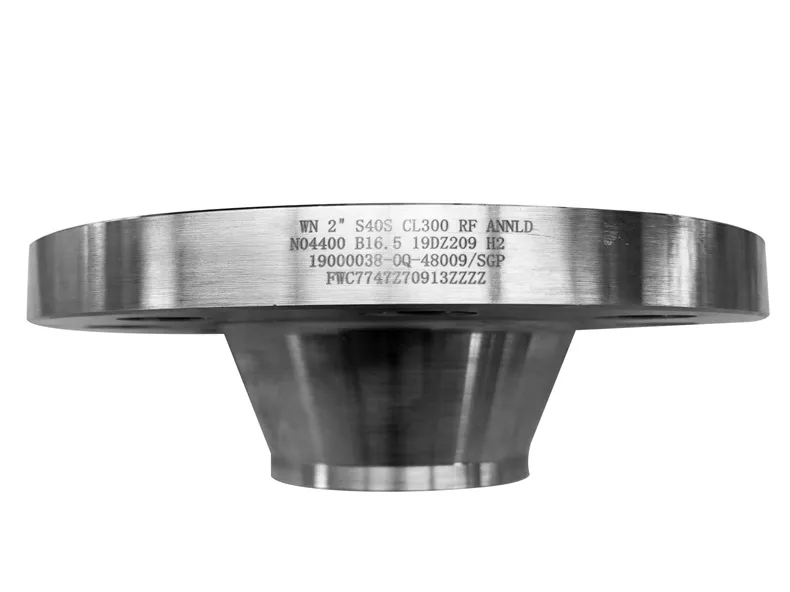What is a weld neck flange? A weld neck flange is a type of flange that features a long tapered hub that gradually transitions into the thickness of a pipe, providing a smooth flow of fluids and reducing stress concentration at the base. It is designed to be butt-welded to the pipe, ensuring a secure and leak-proof connection. This type of flange is commonly used in high-pressure and high-temperature applications because of its durability, dependability, and capacity to endure extreme operating conditions. Weld neck flanges are typically utilized in sectors like oil and gas, petrochemicals, and energy production.

What Is WNRF Flange
What is WNRF flange? WNRF (Weld Neck Raised Face) flange is a type of weld neck flange with a raised face, which improves sealing performance by concentrating pressure on a small section of the flange. The raised face design allows for better sealing in high pressure applications. WNRF valves are used in systems where thermal expansion, cyclic stress or high mechanical stress exist. The very long center length of WNRF flanges provides excellent reinforcement of the welded joint, making it ideal for critical applications such as oil fields, power plants and offshore platforms where structural accuracy is critical and prevents damage.
What Is RFWN Flange
What is RFWN flange? An RFWN (Raised Face Weld Neck) flange is a type of weld neck flange that incorporates a raised face on its sealing surface. A new heating and air conditioning system was developed. Also, the RFWN flange has a grip in the middle of the pipe that is strong and prone to corrosion. This type of flange is commonly used in critical applications like petrochemical plants, power generation, and offshore industries, where the combination of durability, high pressure, and temperature resistance is essential.
What Is A Weld Neck Flange Used For?
What is a weld neck flange used for? The weld neck flange is typically used in tight and high temperature applications where a reliable and secure connection is essential. Its higher open office strength increases structural strength, reducing stress and tension problems in welded joints. This makes it suitable for applications such as oil and gas, petrochemicals, power plants and shipbuilding. The flange reduces the free flow of water and air through air and water, which increases the safety of pipes prone to corrosion or corrosion. Also, the body cools very quickly in a system where the temperature or pressure varies regularly.

What Is The Difference Between A Weld Neck And A Socket Weld Flange?
Design
This socket weld flange has a long tapered neck that gradually transitions into the thickness of the pipe. It is designed to be butt-welded to the pipe, which provides a strong and reinforced connection.
This flange has a socket in which the pipe is inserted. It is designed for use with small-diameter pipes (typically 2 inches and below) and is welded around the outside of the pipe that sits in the flange socket.
Installation
Requires a butt weld, which involves aligning the flange with the pipe ends before welding. This provides a seamless and smooth transition from the flange to the pipe.
A pipe is inserted into the coupling and then welded around the joint. This method is usually quicker and easier for smaller diameters.
Applications
Frequently utilized in applications involving high pressure and high temperature where structural integrity is crucial, such as in oil and gas pipelines and power plants.
More suitable for smaller pipes in low- to medium-pressure applications, often found in industrial piping systems, water treatment facilities, and process plants.
What Is The Difference Between Lap Joint And Weld Neck Flange?
Design
Composed of two parts: a stub end and a loose flange. The end of the shaft is attached to the seat, but the open end is not attached to the shaft and can be adjusted to the end of the shaft. This structure allows for a clean and organized process.
This product features long folding handles welded to a double tube. The plate structure allows for better flexibility and load distribution, improving durability and thermal stability.
Application
It is often used in low-pressure applications where it is important to connect and disconnect connections. It is often found in systems requiring frequent maintenance or inspection, such as in piping systems for chemical processing or in flanged connections where flexibility is needed.
Widely utilized in applications that require high pressure and high temperature, such as in oil and gas, petrochemical plants, and power generation. Its design allows for better stress distribution and structural integrity under severe operating conditions.
Cost
Generally less expensive than weld neck flanges, as they require fewer materials and are simpler to manufacture.
Generally costlier because of the manufacturing process and the need for precise welding techniques.

What is a weld neck flange? This type of flange is suitable for high pressure and high temperature applications, providing excellent control and flow characteristics. At Elite Piping, our hand welded flanges are manufactured to the highest standards, ensuring reliability and performance in critical industries such as oil and gas, oil and power generation. With a dedication to quality and ensuring customer satisfaction, Elite Piping is your trusted partner for durable and efficient flange solutions.
GET IN TOUCH
Company:
Elite Piping Manufacture Co., Ltd.
Factory Address:
Office # 805, Building No. 6 Poly Metropolitan, Yongshum Town, Tongzhou District, Beijing, China.
Contact Person:
Michael
Contact Numbers:
+86 186 1829 1381
Email:
elite@elitepiping.com

